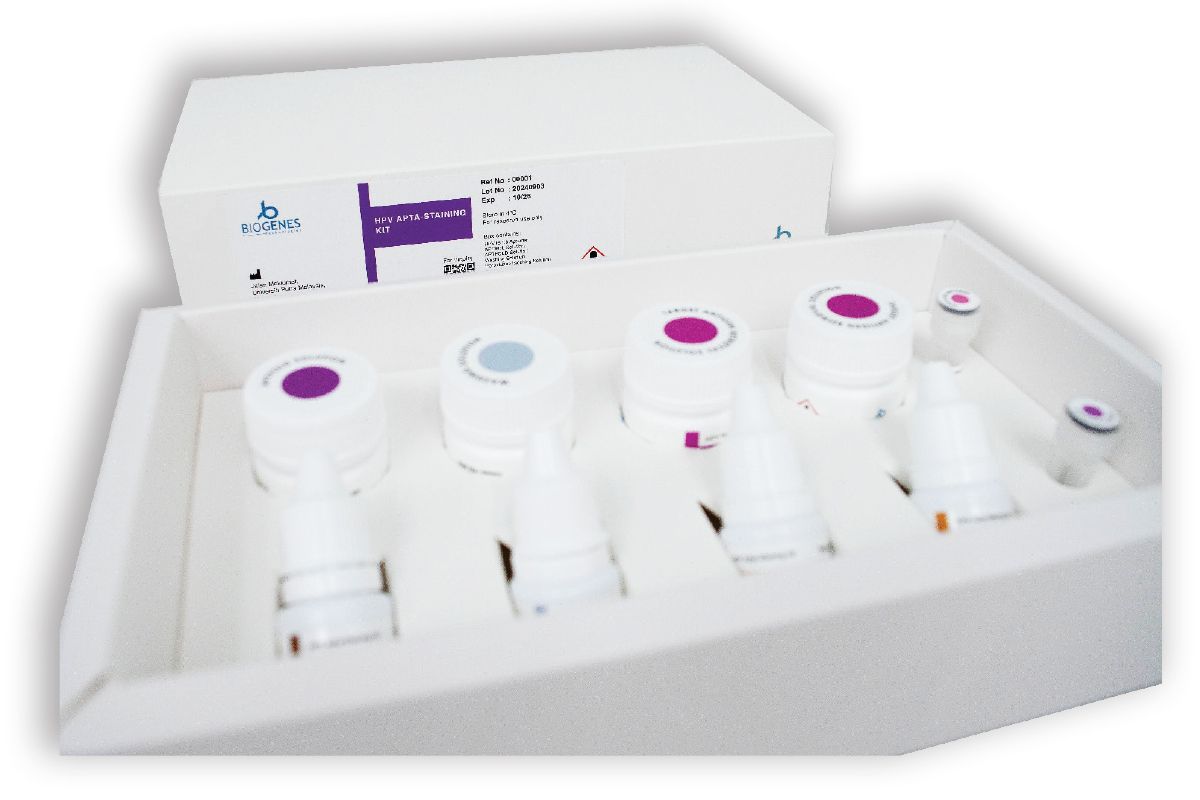
This article first appeared in Digital Edge, The Edge Malaysia Weekly on March 24, 2025 - March 30, 2025
Women in their 40s and 50s face a higher risk of mortality when diagnosed with the human papillomavirus (HPV), the main cause of cervical cancer. While efforts are being made to address this through the provision of vaccination for younger girls, the older generation remains vulnerable.
Last October, an HPV diagnostic kit utilising aptamers — a type of synthetic antibody — was introduced. This innovation aims not only to accelerate the diagnostic process but also to enable earlier detection, reducing the likelihood of complications.
The testing kit was developed by Biogenes Technologies Sdn Bhd, a Malaysia-based biotech company specialising in molecular diagnostics and genomics. The company leverages its expertise to commercialise diagnostic kits in relevant fields.
When a person contracts HPV, common symptoms such as fever may occur. However, due to the mild nature of the symptoms, those infected often do not notice anything unusual.
Early-stage cervical cancer is also difficult for medical professionals to detect, as it does not show obvious symptoms.
However, with aptamer diagnostic technology, the disease can be detected more effectively, says Biogenes chief operating officer Tang Kok Mun. “As soon as there’s an infection, you can detect it, because once the virus is present, it is already in the cervical cells.”
Biogenes has chosen to focus on HPV diagnostics due to the urgent need highlighted by the World Health Organization (WHO), as well as the relatively low awareness of the disease.
“I think a lot of people don’t know that women can actually get HPV infections from men. Men can also get an HPV infection, but it doesn’t lead to any cancer, so that’s why it’s considered a sexually transmitted disease (STD),” he explains.
“The burden has shifted to women rather than [being on] both men and women. In the future, imagine you can test both males and females for this kind of infection.”
So far, Biogenes has invested RM500,000 in developing the product. It also sponsored the renovation of a lab in Hospital Universiti Sains Malaysia (USM) to be used as a centre for training and for collaboration with researchers.
If there is demand for the kit overseas, Tang says the company will patent and license the technology.

How it works
The HPV carries specific proteins that enable the Biogenes team to obtain the correct protein profile for diagnosis. Once the sequence is mapped out, it follows a simple ACTG pattern representing the four nucleotide bases of DNA — adenine, cytosine, thymine and guanine. A binding sequence is then designed to attach to the site where the protein is expressed, facilitating detection.
STDs are often difficult to treat. While some have known cures, others are highly prone to mutation, making treatment more challenging. Biogenes addresses this issue by leveraging artificial intelligence to predict HPV genetic mutations, allowing for more precise and proactive planning.
The company is currently focusing on two high-risk strains of HPV — strains 16 and 18— that are associated with an increased risk of cervical cancer.
Aptamers play a crucial role in this testing process. Developed in the laboratory, they are typically used to detect pathogens and cancer cells by identifying biomarkers — signals produced by the human body in response to abnormalities.
These abnormalities are visible to the naked eye using a technique called immunohistostaining, which involves staining transparent, microscopic cells to observe colour changes. By applying reagents and incubating the cells, professionals can examine them under a microscope to aid in diagnosis.
Aptamers function like antibodies but have distinct advantages. According to Biogenes’ test results, they can penetrate deeper into the cell nucleus, delivering higher-quality results in a shorter time.
“This is really important because with this [diagnostic kit], the government and pathologists will be able to cut down their costs, and it’s easier to use,” points out Tang.
The company manufactures its aptamers in a dedicated facility, using computer software to streamline the process. According to Tang, 80% of the work can be carried out by computer, while the remaining 20% is dedicated to validation and sample testing in the laboratory.
This approach reduces development time by six months, and the cost of producing aptamers is significantly lower compared with antibodies.
Additionally, aptamers are more durable, allowing them to remain stable at room temperature without the need for refrigeration.
Tang says the company hopes to export the product to less developed countries where storage can be an issue. “Once you take antibodies out from the refrigerator, they will degrade. [Aptamers are] biological material, so they are much more stable and easier to use.”
Less invasive
Pap smears have been the standard screening method for cervical cancer for decades. While they are generally painless when performed correctly, they often cause discomfort and many women regard them as invasive and unpleasant.
Tang notes that according to WHO, the screening rate for Malaysian women is 20% to 30%, much lower than the national target of 80%. While this figure may not fully reflect individual attitudes towards screening, it still shows that only a small percentage of women are undergoing testing.
To address this, he says Biogenes is developing a new type of aptamer-based diagnostic technology that will eliminate the need for a Pap smear, requiring only a urine sample. This innovation is expected to be available by 2026.
“We’re going to put [the same aptamer] on our biosensor platform where it works like a glucose meter. [The strip] goes into your portable reader, you take a urine sample, drop it onto the sensor strip, and then you can screen for HPV infection.”
Tang hopes that this approach will gain widespread adoption, eventually reducing the reliance on Pap smears and staining procedures.
Biogenes is currently working with the Malaysian government and the Ministry of Health to build a use case for the diagnostic kit. The first site to implement the technology will be Hospital USM in Kota Bharu, marking the initial phase of its rollout.
Tang explains that detailed reports will be produced at each stage, from design to laboratory testing, to ensure thorough validation. While current results indicate success, the next challenge lies in convincing medical professionals and the ministry to formally recognise and adopt the technology.
“We have to prepare ourselves with a lot of scientific facts. This is something that you cannot bypass because for medical products and human lives, you don’t want to give a misdiagnosis,” he says.
Save by subscribing to us for your print and/or digital copy.
P/S: The Edge is also available on Apple's App Store and Android's Google Play.
- Musk becomes Forbes’ world’s richest billionaire of 2025
- Xiaomi car with driver assistance crashes, three reported dead
- Gas pipeline blaze: Risk of secondary explosion very low, says Fire Dept chief
- Newsmax founder and ex-NY Post journalist Christopher Ruddy is now a billionaire
- Gas pipeline blaze: Petronas Gas, Gas Malaysia halt trading for an hour as market reopens
- Democratic US Senator Booker takes on Trump in record-breaking speech
- Australia to 'stand up for national interests' on US tariffs, says PM Albanese
- Police to look into allegations that digging caused gas pipeline fire
- White House says Trump will go ahead with tariffs as nervous world awaits trade war
- Hard data shows US economy solid, but there is fear around tariffs — Fed's Goolsbee

